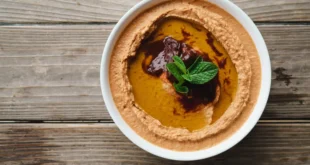The Rich Flavors of Indian Spices and Curries – 365Tastes
India’s culinary landscape is a vibrant blend of spices, flavors, and traditions. At the heart of Indian cuisine are spices and curries, which infuse dishes with bold, complex flavors. From the heat of chilies to the warmth of cumin and coriander, Indian spices and curries create an unforgettable sensory experience. At 365Tastes, we celebrate these rich flavors, offering you the ingredients, recipes, and inspiration to bring the essence of Indian cuisine into your kitchen. Join us to explore the depth and variety of Indian spices and curries and experience authentic, flavorful dishes at home.

The Importance of Indian Spices in Cooking – 365Tastes
Indian spices are the backbone of many dishes, transforming simple ingredients into extraordinary meals. These spices not only add depth, aroma, and flavor to food, but they also have a profound impact on health, with many Indian spices known for their medicinal properties. The Indian subcontinent has long been regarded as a treasure trove of spices, some of which have been traded globally for centuries.
Spices are so integral to Indian cuisine that there’s a dedicated art to combining and blending them. The magic often happens in the tadka (tempering), where whole spices are briefly fried in hot oil to release their essential oils, creating a base for the dish. This process allows the spices to bloom and infuse the oil with flavor, which then spreads throughout the dish.
The Rich Flavors of Indian Spices
India is renowned for its vibrant and diverse culinary traditions, and at the heart of these dishes are the rich and aromatic spices that create bold flavors. From the bustling streets of Delhi to the serene kitchens of Kerala, spices play an essential role in crafting the distinct taste profiles of Indian cuisine. These spices not only add depth to the flavors but also offer a variety of health benefits. Let’s explore some of the most common and essential spices that form the foundation of Indian cooking, each contributing its unique characteristics to the diverse flavors that define this cuisine.
Whether it’s the fiery heat of chili, the earthy warmth of turmeric, or the sweet undertones of cinnamon, Indian spices create a harmonious blend of flavors that make every dish an experience. These spices are often used in combinations, known as masalas, which elevate the complexity and richness of traditional Indian meals. By incorporating these spices into your cooking, you’ll be able to bring the authentic and vibrant flavors of India into your kitchen.
1. Cumin (Jeera) – 365Tastes
Cumin is one of the most popular spices in Indian cooking, known for its earthy and slightly smoky flavor. It is used in almost every type of curry and is a key component in many spice blends, such as garam masala. Cumin seeds are typically fried in oil during the tempering process to enhance their flavor, while ground cumin adds depth to gravies and marinades.
2. Coriander (Dhania) – Essential in Indian Spices and Curries
Coriander (Dhania) is an essential spice that plays a prominent role in Indian cuisine, particularly in the preparation of flavorful curries and spice blends. Both the seeds and fresh leaves (commonly known as cilantro) are used to bring distinct flavors to a wide variety of dishes. The seeds of coriander have a citrusy, slightly sweet flavor, which makes them a perfect complement to stronger, more pungent spices like cumin and mustard. This balanced flavor profile makes coriander an indispensable ingredient in spice mixes such as garam masala, sambar powder, and curry powders, which form the base for many traditional curries.
3. Turmeric (Haldi)
Indian Spices and Curries – Turmeric is a bright yellow spice that not only gives Indian dishes their signature color but also imparts an earthy and slightly bitter flavor. Known for its powerful anti-inflammatory and antioxidant properties, turmeric is an essential spice in many curries and lentil dishes. It’s also a critical ingredient in many spice blends, such as garam masala.
4. Mustard Seeds (Rai)
Mustard seeds are small but pack a punch when it comes to flavor. These seeds release a sharp, tangy flavor when cooked in oil, making them an essential part of many South Indian curries. They’re often paired with cumin and curry leaves to create a flavorful tempering.
5. Cardamom (Elaichi)
Cardamom is known as the “queen of spices” and is used both in sweet and savory dishes. There are two types of cardamom commonly used in Indian cooking: green cardamom and black cardamom. Green cardamom has a sweet, floral, and aromatic flavor, while black cardamom has a smoky and more intense taste. Cardamom is often used in masala chai, desserts like kheer, and in spice blends like garam masala.
6. Cloves (Laung)
Cloves are strong, aromatic flower buds that add a warm, spicy, and slightly bitter flavor to curries, stews, and rice dishes. They’re typically added to tempering along with cumin and coriander to add depth to the dish.
7. Fenugreek (Methi)
Fenugreek is a unique spice with a slightly bitter flavor that pairs well with rich gravies. The seeds are often used in pickles, curries, and dal, while the leaves (known as methi leaves) are used in parathas and sabzis. Fenugreek has also been used in traditional medicine for its digestive benefits.
Curries: The Heart of Indian Cuisine
No discussion of Indian cuisine would be complete without exploring the vast variety of curries that define this food culture. Indian curries are made using a combination of spices, aromatics, and protein or vegetables, cooked in a rich sauce or gravy. The beauty of curry lies in the variety of textures, flavors, and heat levels, all of which can be adjusted to suit individual tastes.
Popular Types of Indian Curries
1. Butter Chicken (Murgh Makhani)
One of the most famous curries globally, butter chicken hails from Delhi and is known for its rich, creamy tomato-based gravy. The chicken is marinated in yogurt, spices, and lemon juice, then cooked in a creamy sauce made from butter, cream, and a blend of spices like garam masala, cardamom, and cumin. It’s typically served with naan or rice.
2. Chicken Tikka Masala
Though its exact origin is debated, chicken tikka masala is an extremely popular curry in India and around the world. Made from marinated chunks of grilled chicken cooked in a spicy tomato gravy, this curry strikes a perfect balance between smoky, tangy, and creamy flavors.
3. Rogan Josh
Rogan Josh is a signature curry from Kashmir, featuring lamb or goat cooked in a richly spiced sauce made from yogurt, ginger, and a variety of spices like cloves, cardamom, and cinnamon. The dish is known for its deep red color, which comes from the use of kashmiri red chilies.

4. Vindaloo
Originally from Goa, vindaloo is a fiery curry made with vinegar, garlic, and a complex blend of spices. It’s known for its tangy, spicy flavor profile, which pairs perfectly with meats like pork or chicken. Vindaloo can be adjusted to taste, but it’s typically served with rice or naan to balance its heat.
5. Dal Tadka
A staple in every Indian household, dal tadka is a lentil curry made from yellow dal (lentils), tempered with ghee, garlic, and a mix of cumin, mustard seeds, and turmeric. It’s a hearty, comforting dish that pairs beautifully with rice or chapati.
6. Palak Paneer
Cloves are potent, aromatic flower buds known for their warm, spicy, and slightly bitter flavor. These small but powerful spices bring a unique depth to a variety of dishes, including curries, stews, and rice dishes. Often used in tempering, cloves are typically combined with other spices like cumin and coriander to create a fragrant base that enhances the overall flavor of the dish.
Their bold taste is perfect for adding complexity to both savory and sweet dishes, and they also provide a subtle warmth that lingers in every bite. In addition to their culinary uses, cloves are valued for their numerous health benefits, including their ability to aid digestion and offer antioxidant properties.
7. Korma
Korma is a rich, mild curry known for its creamy texture and slightly sweet flavor. It’s often made with yogurt, cashews, and a variety of aromatic spices. It’s ideal for those who enjoy flavorful but less spicy curries.
The Magic of Indian Spice Blends
A unique feature of Indian cuisine is the use of spice blends or masalas that bring multiple spices together into one harmonious mixture. Garam masala, chana masala, and tandoori masala are just a few examples of these essential blends that help create the signature flavors of Indian curries.
1. Garam Masala
A fundamental spice blend in Indian cooking, garam masala combines spices like cumin, coriander, cardamom, cloves, black pepper, and cinnamon. It’s used in a wide variety of curries, dal, and vegetable dishes to add a warming flavor and complexity.
:max_bytes(150000):strip_icc()/what-is-garam-masala-995690-1-f7ef810582f94bc9bbd18f40205beb5a.jpg)
2. Chana Masala
Chana masala is a blend specifically made for chickpeas. It’s commonly used to prepare chana masala curry, a dish of chickpeas cooked in a spiced tomato gravy. The blend usually contains coriander, cumin, garam masala, turmeric, and other warming spices.
3. Tandoori Masala
A key ingredient in tandoori cooking, tandoori masala is a spice mix made with coriander, cumin, garam masala, and turmeric. It’s often used to marinate meats and vegetables before they are cooked in a tandoor (clay oven), resulting in a smoky, charred flavor.
Why You Should Explore Indian Spices and Curries
The beauty of Indian spices and curries lies in their ability to create layers of flavor and complexity. Whether you enjoy the mild warmth of a palak paneer or the fiery heat of a vindaloo, there is a curry to suit every palate. Indian cuisine is an endless journey of discovery, and the variety of spices used in different curries ensures that there’s always something new to try.
At 365Tastes, we believe that exploring Indian spices and curries offers a wonderful way to immerse yourself in the rich culinary traditions of India. The depth of flavors, the health benefits of spices, and the wide range of curries make Indian food not just a meal, but an experience.
 Tastes | Live healthy every day
Tastes | Live healthy every day

